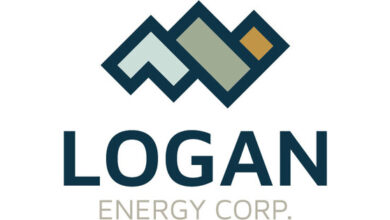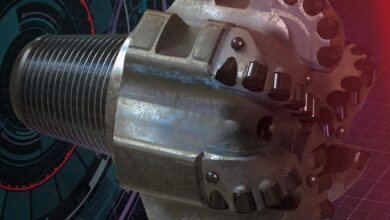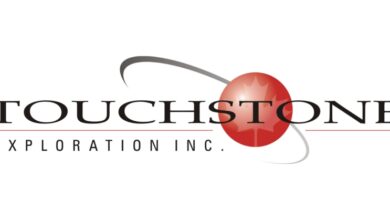Top drives have transformed drilling: Now, new design targets ultra-deep, ERD
By David Reid, Larry Wells and Jeremy Ogg, National Oilwell Varco
In 1982, a radically new drilling system appeared in the oil patch, one that would ultimately allow tremendous advances in the oil and gas industry’s well construction capabilities. The advent of the original Top Drive System (TDS) foreshadowed the development of reservoirs that were otherwise considered to be commercially impractical, and greatly improved the net cost, time-to-market and production of many others.
Now, in 2008, a fourth generation of top drives from National Oilwell Varco (NOV) aims to continue extending the horizon of reservoir exploitation possibilities.
Initially aimed at reducing the costs and risks associated with ultra-deep offshore development projects, the TDX series of top drives is also being chosen to drill in the most extreme ultra-extended-reach well construction programs being planned.
With increased activity in accessing offshore reservoirs from land drilling rigs, Coastland Drilling is calling for more torque and speed from top drives, where history is repeating itself in increasing demand on our drilling equipment.
Kelly-less
In 1981, Duke Zinkgraf of Sedco (now Transocean) had the vision of drilling down from the top of the drillstring and adding complete stands of drill pipe, which would end the use of the kelly drilling process. Duke searched for an innovative company, one willing to embrace and develop this new concept, right in the face of the industry’s most historic downturn.
He teamed up with a small drilling tool company in California that he knew had been making strides in making improvements to rig floor operations and safety.
Duke found a partner with Varco (now National Oilwell Varco). George Boyadjieff, Varco’s president, assembled a small team of engineers led by Jim Brugman and dedicated it solely to the R&D program for what came to be called the Top Drive System.
The two companies, working to turn Duke’s idea into reality, rapidly developed the first prototypes of such a machine, with the initial installations being on the Sedneth 201 and 202 jackups in the Middle East.
Times were tough during that period, and many of the well-known companies all across the industry were on a downward slope towards bankruptcy or consolidation. However, legend has it that one day George walked out to the shrinking manufacturing plant in Orange, Calif., stood atop one of the new top drives and promised to those gathered around that this new machine represented the ultimate survival of the company in those dark times.
As those first quickly developed TDS units made their way into the field, the road to general acceptance was certainly bumpy. Besides the many “teething” problems with the top drive itself, the team found that integrating the top drive drilling system into the existing drilling processes and machinery was a formidable challenge.
However, both companies persevered through those early months. As design and operating lessons were learned and the first prototypes were replaced with TDS-3 production models, Top Drive System technology was improved to the point where its advantages could be clearly appreciated. Its value and potential were formally recognized with the P.E.I. Engineering Innovation Award at the 1983 OTC.
The result was a growing transition away from primarily straight-hole kelly drilling to highly deviated and extended-reach wells with the TDS. Over time, the TDS became easy to justify because of the impact it made on overall costs, productivity and well construction possibilities.
Who could argue with the prospect of developing a reservoir with, say, two platforms instead of three? The advantages of TDS drilling were so striking that, in many projects, it simply became an economic imperative, even under the depressed business conditions of the time.
Evolutionary response
Once the industry began to realize the practical drilling capabilities of the TDS method, new and radical well programs were being designed to exploit them. As these programs became more and more challenging, the TDS-3 was nearing the limits of its capabilities. It became clear that higher power and more reliable top drives were needed.
Over the next several years, Larry Wells led the Varco engineering team to deliver those improved capabilities hand-in-hand with drillers and well engineers. New generations of TDS designs emerged, and tougher drilling programs were developed as their capacities increased.
The P.E.I. award-winning model TDS-4 two-speed top drive provided 50% increases in both drilling torque and hoisting capacity, along with much-improved reliability and up-time, all in the same package size as the TDS-3. For the first time in the short history of the top drive, a new model went to work in the field almost flawlessly.
Both the -3 and the -4 were subsequently improved further by the introduction of the TDS-3S and TDS-4S, which integrated the drilling swivel and the top drive into one compact unit. They were so compact that expensive derrick modifications to allow TDS installations became a thing of the past. The TDS-4S quickly became the gold standard for offshore drilling and continues to be manufactured to this day.
In order to obtain even higher drilling torque during this period, Varco worked with General Electric (GE) to develop a new generation of its locomotive-based DC drilling motor, the GE 752 “Hi-Torque,” which was soon made the standard motor on all TDS top drives.
Also in the late 1980s, Maritime Hydraulics (MH) began producing its Hydraulic Top Drive the Derrick Drilling Machine (DDM), an alternative to the electric TDS, with a smaller drilling package in the derrick. The hydraulic DDM ultimately struggled against the electric TDS because of the efficiencies of the power conversion.
However, innovative steps forward were made with the DDM’s link tilt design, which efficiently and safely tucked the elevators in behind the pipehandler in drill down mode. Later in the 1980s, MH developed the electric DDM machine as a standard production design.
The introduction of a TDS-6S design was the first evolutionary development to address raw horsepower limitations of top drives in the early 1990s. Some well programs were being planned that needed not much more drilling torque, but rather as much power as could be delivered downhole. The TDS-6S added a second drilling motor to what was essentially a derivative of the TDS-3S design, almost doubling the available power delivery.
From DC to AC
In 1991, Shell, in collaboration with Hitec, Dreco and Varco, produced Troll A, a 100% AC drilling rig. This pioneered another design step-change in the TDS-7S, the world’s first AC-powered top drive, utilizing a 900-hp ABB industrial induction motor. The development of the TDS-7S ultimately led to critical performance improvements that are readily accepted today in AC drilling technology.
After Troll A, the unique characteristics of the AC motor began influencing a number of subsequent equipment designs. Leveraging off the development of GE’s new line of AC induction motors for its locomotive applications, the TDS design team again worked with GE in developing the GEB-20, 1,100-hp drilling motor.
Substituting the GEB-20 into the TDS-4S, the TDS-8S was born, combining a proven top drive design with that of a proven high-spec AC motor.
While all of these energies were being focused offshore, a significant push to expand the advantages of the Top Drive System for land applications led to the development of a portable top drive, one so compact that it could be installed in land-drilling masts, bringing TDS capabilities from offshore to the land drilling industry.
The Bowen Power Swivel had been developed under BJ Hughes to operate while traveling on a simple torque tube hanging from the crown, eliminating the need for the mast structure to absorb the drilling and connection torque. Instead, torque was taken from the hanging tube directly into the A-frame near floor level.
At this time, Varco BJ started on a clean sheet of paper and used the torque tube approach to design a small portable top drive, again using AC technology to significantly reduce the package size and eventually settling on the TDS-9SA. Using twin 350-hp industrial AC induction motors, the TDS-9SA opened a vast new market for top drive technology. This was followed by an even smaller, single-motor TDS-10SA, still using the advantages of AC power.
Initial field applications of the new AC variable-frequency drive (VFD) systems that were required to power AC motors were difficult, to say the least, in the land drilling environment (as opposed to the familiar SCR-DC drives). The industry went through a sometimes painful process of getting up to speed with this new technology, driven by the promise of performance and well-construction improvements on land that had long been realized offshore.
A key development in land rig acceptance of AC power came with the advent of a new, ground-up portable rig design. In order to take full advantage of AC power’s potential, Helmerich & Payne International Drilling Co, under the leadership of their chief engineer Alan Orr, and Varco’s Brian Eidem, designed and built an entirely new-generation land rig using all AC motors throughout its drilling systems.
Integrating Varco’s latest top drive, the 800-hp twin-motor TDS-11SA, into its unique mast design, H&P’s Flex 3 rigs quickly hit the ground running. Propelled by this success, and combined with the international land drilling market expanding rapidly, the acceptance of the AC top drive on land caused the TDS-11SA to become the largest-selling single design in the history of top drives.
Taking a stand
While Varco was making strides in top drive innovation, two other companies, National Oilwell and Hydralift, were making significant design developments of their own.
First bringing to market their PS-500 in 1990 to Noble Drilling, National Oilwell’s design team focused on building a more serviceable and redundant top drive than the TDS and DDM designs. Key to the design was the pipe-handling unit, which featured a more robust dual-actuated IBOP, with side in-line motor couplings that enabled a quick-disengage system for drilling motors from the gear-train, and a system for modular motor replacement.
Hydralift soon followed with their Hydralift Power Swivel – 500 (HPS) in 1992, a unit that would continually make constant improvements to the market-standard TDS. Acquiring the Bretfor – 500 design from ACB, Hydralift had both the advantage and challenge of working with a design that had been in operation since 1984.
Under the direction of Svein Stubstad, Hydralift began heavily modifying the Bretfor design to include an integrated swivel and critical design improvements in the upper gearcase sealing system, ultimately providing a more modular design. Expanding on the HPS design, Hydralift went on to provide a portable dual AC motor top drive in their HPT 500 E, a unit that had particular success in harsh-environment land drilling.
Lessons applied
Today, we are witnessing yet another breakthrough in top drive technology in the TDX-1250 from NOV. The design was driven by a growing dissatisfaction with the performance limits and reliability of the existing deepwater top drives, as they were frequently being used beyond the edge of their capabilities.
With the merging of three leading top drive suppliers – National Oilwell, Hydralift and Varco – the newly formed company under the NOV roof pulled together field service feedback, customer input and the experiences of the three design teams to develop the top drive design for tomorrow.
An early design brief for a 1,250-ton top drive was introduced by Transocean for competitive bidding and design submittals. The requirements included an analysis of critical factors that would enable off-contract downtime to be reduced from the 1% and higher experienced at the time down to 0.1%, as well as 10 years of operation without removal from the rig. It also required reduction of complex repair and maintenance at well center by designing in modular components and subsystems that would be quick and simple to remove and replace, as well as redundancy wherever possible.
In the initial bidding, the NOV concept proposals were tabled by Transocean in favor of a Maritime Hydraulics (now Aker Solutions, see Page 48) design for the new drillships. On loss of the opportunity, NOV went back to the drawing board. The requirements were revised to include stringent expectations on the envelope that the machine could occupy, specifically to facilitate retrofitting of existing applications.
Let’s do it again
The result is a new top drive design from NOV, the TDX-1250. The design includes dozens of new features, many patented, that will drastically reduce downtime, simplify operation and maintenance, and provide a step-change in drilling capabilities.
Harnessing 2,200-hp, the TDX provides 90,000 ft-lbs continuous drilling torque, with speeds ranging from 130-260 RPM, and it is designed to facilitate an optional 105,000 ft-lbs at 2,600 hp. The machine is manufactured for a 1,250-ton API 8C hoisting rating, and the bearing life will be 10-25 times that of existing heavy offshore top drives.
The TDX comes with the latest mechanical seal washpipe technology, currently operating on top drives drilling in HPHT applications with over 2,000 rotating hours.
The TDX was designed with higher capacities, modular fast replacement sub-systems, and redundant backups in critical components such as the IBOPs, major seals and lubrication systems. Simplicity and improved safety features have been key, and it has only a 85 dBA operating noise level at drill floor.
It features two drilling motors with a simple disengagement system, has the ability to drill on a single motor if one fails, and utilizes a quick-removal main shaft.
The lessons of operating these machines for over 20 years has seen the introduction of the new standards that will set expectations for the machines that are coming tomorrow.
The original goal of the TDX was to provide the power, strength and reliability to execute ultra-deepwater 40,000-50,000 ft wells planned into the next decade and beyond. And, indeed, the initial shipments have been to Noble’s semisubmersibles for that market. However, both ExxonMobil and BP have already chosen the TDX-1250 for upcoming long-reach Coastland applications.
Land-locked
Since environmental issues are ever becoming more predominant in areas rich in offshore reserves, a number of the extreme-range extended-reach drilling (ERD) rig applications are making a more common practice of drilling offshore formations from Coastland drilling rigs.
A pioneer of this application, ExxonMobil and Parker Drilling’s Yastreb pushed a traditional TDS-8S beyond its normal operating capacity in an effort to drill some of the world’s longest ERD wells into an offshore area limited by environmental restrictions. ExxonMobil’s current drilling plans hope to go far beyond the current record ERD wells, with requirements for more power and more torque exceeding the capabilities of the current AC top drives. Sited on the coast of Sakhalin Island, Yastreb will be the first application of the TDX in Coastland drilling in early 2009.
BP is also engaging the capabilities of the TDX-1250, again partnered with Parker Drilling, on another Coastland application on the North Slope. The current plan for the BP Liberty project has the rig location being taken slightly offshore on an artificial island, again utilizing a land application to reach offshore formations. This new rig is being designed around the capacities and capabilities of the new TDX’s power train, relying on the machine to explore the new limits and new frontiers of ERD.
To boldly go
As throughout its rich history, the top drive will continue to enable the world’s wells to be drilled deeper and farther, yielding access and economic justification to reservoirs presently thought inaccessible.
Birthed once again from the same demands that drove the creation of the first top drives, the TDX stands ready to be both utilized and tested by well plans that were unimaginable only a few short years ago. However, the future will undoubtedly see more effective, modular and redundant top drive designs, capable of increased duty cycles, as we keep pushing the drilling envelope in our continuous pursuit of economically accessible hydrocarbons.




